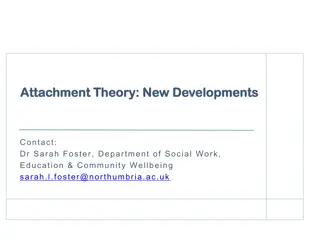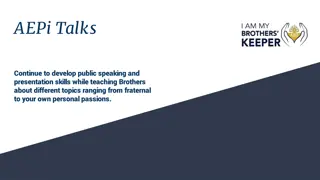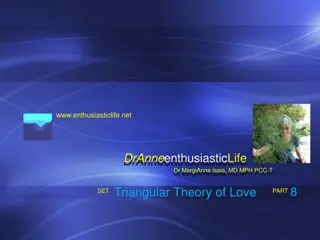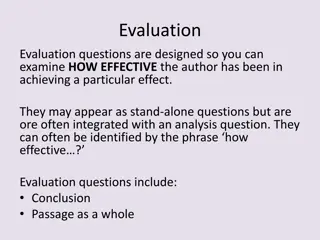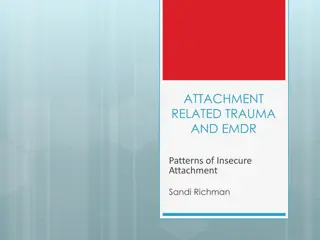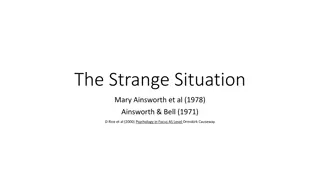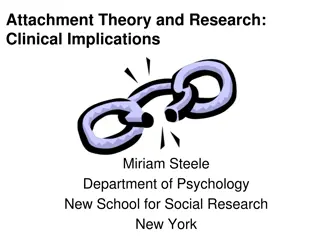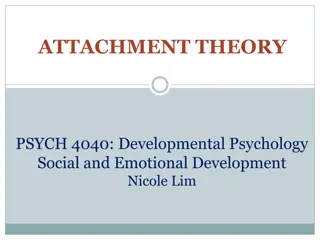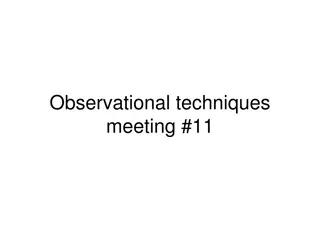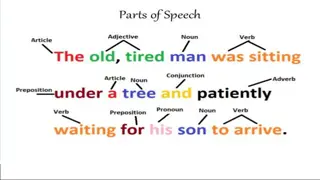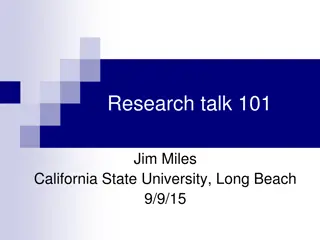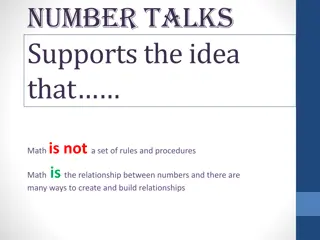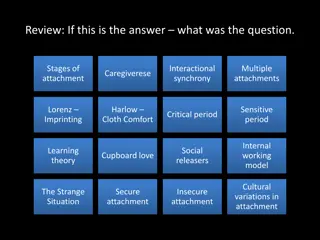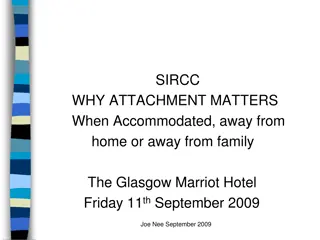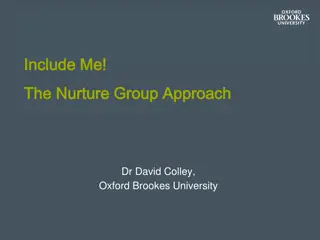
NIST Quantum-Resistant Cryptography Initiative
Explore the NIST PQC project focusing on quantum-resistant public key cryptosystems, monitoring quantum computing progress, and the timeline for introducing new cryptographic standards. Understand the urgency of transitioning to quantum-safe solutions to secure encryption in the face of evolving technologies.
Download Presentation

Please find below an Image/Link to download the presentation.
The content on the website is provided AS IS for your information and personal use only. It may not be sold, licensed, or shared on other websites without obtaining consent from the author. If you encounter any issues during the download, it is possible that the publisher has removed the file from their server.
You are allowed to download the files provided on this website for personal or commercial use, subject to the condition that they are used lawfully. All files are the property of their respective owners.
The content on the website is provided AS IS for your information and personal use only. It may not be sold, licensed, or shared on other websites without obtaining consent from the author.
E N D
Presentation Transcript
The NIST PQC Project Objectives Examine quantum-resistant public key cryptosystems Monitor quantum computing progress and applicability of known quantum algorithms Biweekly seminars since 2012 Publications and presentations Journals, conferences, workshops Collaboration: Hosting academic visitors CryptoWorks 21(U. of Waterloo) Joint Center for Quantum Information and Computer Science, University of Maryland NIST Workshop on Cybersecurity in a Post-Quantum World http://www.nist.gov/itl/csd/ct/post-quantum-crypto-workshop-2015.cfm
How soon do we need to worry? How long does encryption need to be secure (x years) How long to re-tool existing infrastructure with quantum safe solution (y years) How long until large-scale quantum computer is built (z years) Theorem (Mosca): If x + y > z, then worry What do we do here?? y x z secret keys revealed time NSA is transitioning in the not too distant future <https://www.nsa.gov/ia/programs/suiteb_cryptography/> European PQCrypto project ETSI work NIST report - <http://csrc.nist.gov/publications/drafts/nistir-8105/nistir_8105_draft.pdf >
Call for Proposals NIST is calling for quantum-resistant cryptographic algorithms to be considered for new public-key cryptographic standards Digital signatures Encryption/key-establishment We do not expect to pick awinner Ideally, several algorithms will emerge as good choices We may pick one (or more) for standardization
Timeline Fall 2016 formal Call For Proposals Nov 2017 Deadline for submissions 3-5 years Analysis phase NIST will report its findings 2 years later - Draft standards ready Workshops Early 2018 submitter s presentations One or two during the analysis phase
Differences with AES/SHA-3 competitions This is not a competition We see our role as managing a process of achieving community consensus in a transparent and timely manner Post-quantum cryptography is more complicated than AES or SHA-3 No silver bullet - each candidate has some disadvantage Not enough research on quantum algorithms to ensure confidence for some schemes We do not expect to pick a winner Ideally, several algorithms will emerge as good choices We may narrow our focus at some point This does not mean algorithms are out
Requirements The formal Call will have detailed submission requirements A complete written specification of the algorithms shall be included, consisting of all necessary mathematical operations, equations, tables, diagrams, and parameters that are needed to implement the algorithms. The document shall include design rationale and an explanation for all the important design decisions that are made. Minimal acceptability requirements Publicly disclosed and available with no IPR Implementable in wide range of platforms Provides at least one of: signature, encryption, or key exchange Theoretical and empirical evidence that provides justification for claims about security
Specification Implementation Reference version Optimized version Cryptographic API will be provided Can call approved hash functions, block ciphers, modes, etc Known Answer and Monte Carlo tests Optional constant time implementation
Intellectual Property Signed statements Submitted algorithm Implementations Disclose known patent information Available worldwide without royalties during the process If algorithm is not chosen for standardization, the rights will be returned to the submitters
Evaluation criteria To be detailed in the formal Call Security Cost (computation and memory) Algorithm and implementation characteristics Draft criteria will be open for public comment We strongly encourage public evaluation and publication of results concerning submissions NIST will summarize the evaluation results and report publicly
Security Analysis Target security levels 128 bits classical security 64/80/96/128 bits quantum security? Correct security definitions? IND-CCA2 for encryption EUF-CMA for signatures CK best for key exchange? Quantum/classical algorithm complexity Stability of best known attack complexity Precise security claim against quantum computation Parallelism? Attacks on multiple keys? How many chosen ciphertext queries allowed? Security proofs (not required?) Quality and quantity of prior cryptanalysis
Cost Computational efficiency Hardware and software Key generation Encryption/Decryption Signing/Verification Key exchange Memory requirements Concrete parameter sets and key sizes for target security levels Ciphertext/signature size
Algorithm and Implementation Characteristics Ease of implementation Tunable parameters Implementable on wide variety of platforms and applications Parallelizable Resistance to side-channel attacks Ease of use How does it fit in existing protocols (such as TLS or IKE) Misuse resistance Simplicity
Questions How is the timeline? Too fast? Too slow? Do we need an ongoing process, or is one time enough? How to determine if a candidate is mature enough for standardization Should we just focus on encryption and signatures, or should we also consider other functionalities? How many "bits of security" do we need against quantum attacks? How can we encourage more work on quantum cryptanalysis? Maybe we need more "challenge problems"? How can we encourage people to study practical impacts on the existing protocols? For example, key sizes may be too big
So What? Summary Quantum computers will break today s PKC Many proposals for post-quantum crypto, but no drop-in replacement NIST is going to call for quantum-resistant algorithms Signatures, encryption/key-exchange Hope to have standards ready within 10 years This will take a lot of resources Not (quite) as much as SHA-3 We will need more help Post-docs/guest researchers wanted

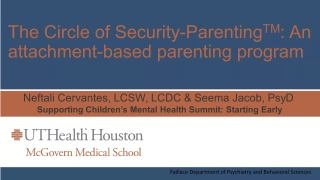
![❤[PDF]⚡ Civil War Talks: Further Reminiscences of George S. Bernard and His Fel](/thumb/20551/pdf-civil-war-talks-further-reminiscences-of-george-s-bernard-and-his-fel.jpg)
